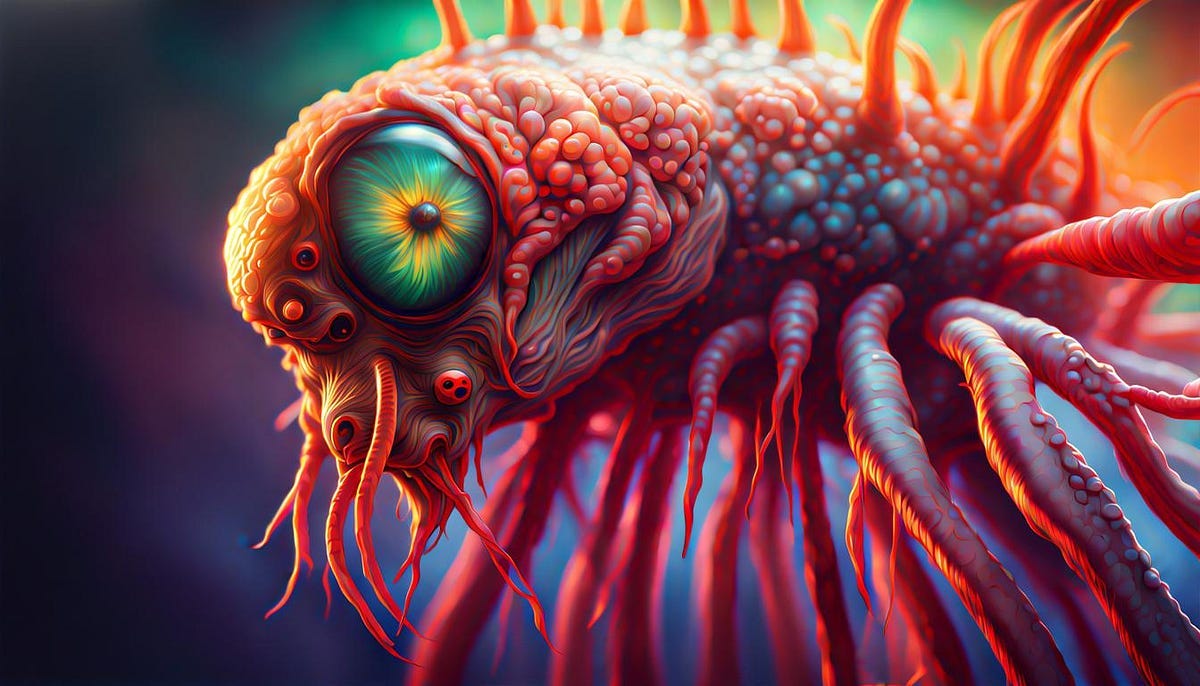Their amazing journey through their host

Scientists have developed new techniques to study how parasites move and exert forces during this migration. One such technique, called traction force microscopy (TFM), has been particularly important.
It has helped researchers understand how different parasites, such as protozoa and metazoans, move and survive in their host’s body. TFM is a versatile tool that can be adapted to different experimental settings and scales, allowing scientists to measure the forces exerted by parasites during their movement. This has led to a better understanding of how parasites move and survive in their host’s body.
For example, TFM has refined long-standing theories about how protozoa move and has uncovered new models for the movement of metazoan parasites, which has improved our understanding of fundamental parasite biology
The study of parasite migration is important because it can help us develop new strategies to control and intervene in the spread of parasitic diseases. By understanding the mechanical forces involved in parasite movement, especially in 3D and in living organisms, we can learn more about how parasites adapt to their environments. This knowledge may eventually lead to the development of new ways to intervene and control parasitic infections
By understanding how parasites move, scientists hope to find new ways to control and stop parasitic infections in the future.
The research on parasite migration is still ongoing, and new findings are constantly emerging. By studying the forces involved in parasite movement, scientists hope to gain a better understanding of how parasites survive and spread in their host’s body. This knowledge could eventually lead to the development of new ways to control and prevent parasitic infections, which would be a significant step forward in the fight against these diseases.
How do parasites overcome the biophysical barriers that hinder their migration
Parasites have evolved various strategies to overcome the biophysical barriers that hinder their migration within their hosts.
These strategies involve the implementation of versatile migratory techniques and the exertion of mechanical forces. The biomechanics of parasite migration within hosts is a complex process that involves the interplay of various forces and mechanisms. According to a study published on ScienceDirect, parasites implement versatile migratory strategies to overcome diverse biophysical impediments.
These strategies involve the exertion of mechanical forces to navigate through the host’s tissues and overcome barriers such as cellular barriers, dense extracellular matrices, and fluid forces in the bloodstream.

Additionally, the study highlights that successful parasitism involves overcoming the biophysical challenges presented by the host, indicating that parasites have developed mechanisms to navigate through and survive in their host’s body.
Furthermore, parasites have been found to adapt their transmission pathways and migration strategies to increase the chances of encountering the next host, countering the host’s defence mechanisms and evolving to overcome various obstacles. This ongoing evolutionary arms race between parasites and their hosts has led to the development of sophisticated strategies for overcoming biophysical barriers.
In the context of specific parasites, such as the protozoan parasite Toxoplasma, it has been observed that the gliding machinery, which includes actin, allows for high-speed helical migration, indicating the presence of specialized mechanisms for overcoming biophysical barriers.
In summary, parasites overcome biophysical barriers through the implementation of versatile migratory strategies, the exertion of mechanical forces, and the ongoing evolutionary adaptation of their transmission pathways and migration strategies. These mechanisms allow parasites to navigate through and survive in their host’s body, highlighting the complex and dynamic nature of parasite-host interactions.
What are some common biophysical barriers that parasites face during migration
Parasites face various biophysical barriers during their migration within host organisms. These barriers include cellular barriers, dense extracellular matrices, and fluid forces in the bloodstream. To overcome these impediments, parasites implement versatile migratory strategies and exert mechanical forces.
For example, the gliding machinery of parasites, such as the protozoan Toxoplasma, allows for high-speed helical migration, indicating the presence of specialized mechanisms for overcoming these barriers. Additionally, the coupling of retrograde flow to force production during malaria parasite migration is a significant aspect of how parasites navigate through the host’s body.
Furthermore, the process of membrane wrapping has been identified as a mechanism through which parasites reduce the energetic requirements for host cell invasion, highlighting the sophisticated strategies employed by parasites to overcome biophysical barriers. Overall, parasites have developed a range of mechanisms to navigate through and survive in their host’s body, indicating the complex and dynamic nature of parasite-host interactions.
Some examples of parasites that migrate through the bloodstream include:
Plasmodium species: The parasites that cause malaria, such as Plasmodium falciparum and Plasmodium vivax, migrate through the bloodstream during their life cycle.
Babesia species: These parasites spend their entire life cycle in the bloodstream.
Trypanosoma cruzi: This parasite can be found in the blood early in an infection and at lower levels later.
6. Filarial nematodes: These are blood parasites that can be found in the bloodstream.
These parasites have developed various mechanisms to navigate through the host’s bloodstream as part of their life cycle, and their presence in the bloodstream can have significant implications for the transmission and diagnosis of the diseases they cause.
Sources
Yi-Ting Yeh, Juan C. del Álamo, Conor R. Caffrey
Biomechanics of parasite migration within hosts — ScienceDirect
Biomechanics of parasite migration within hosts — ScienceDirect.com
A unifying framework for the transient parasite dynamics of migratory hosts — PNAS




